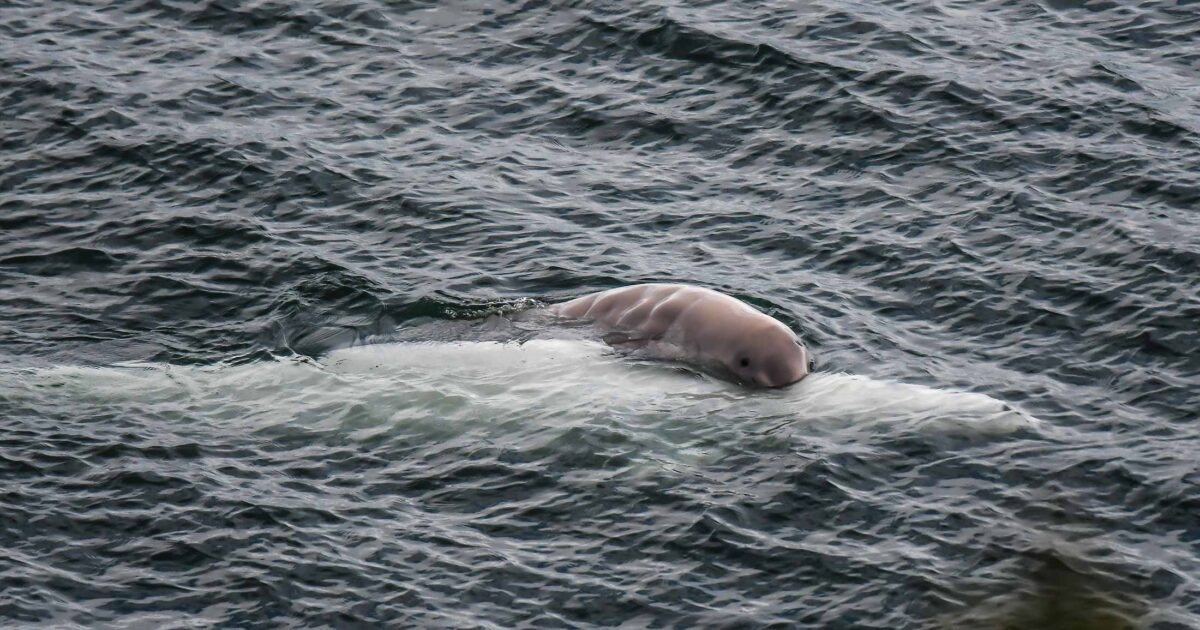Mom, can you hear me? Impacts of underwater noise on mother-calf communication in endangered beluga whales
New research illuminates the impacts of underwater noise on beluga communication.
The St Lawrence Estuary beluga population, endemic to Canada, is at the southernmost limit of its range and is reproductively and geographically isolated from other populations. Sadly, it was legally listed as endangered under Canada’s Species at Risk act in 2016 due to lack of signs of recovery from commercial and recreational hunting, as well as recent decline.
Exacerbating this worrisome decline, newborn calves have been found dead on the shores of the St. Lawrence River at an unprecedented rate in the last decade, as have females with signs of complications during parturition. A 2021 review article and analysis of carcass recovery rates up to 2019 emphasizes how the synergy of multiple anthropogenic stressors represent a profound challenge to this small population. High levels of contaminants, a shortage of prey availability, and underwater noise and disturbance have been identified as the three main threats to the recovery of this population, the same culprits implicated in the lack of recovery of Southern Resident killer whales.

Mom, can you hear me?
Our project “Mom, can you hear me“, the results of which were recently published, illuminated a great deal about the impacts of underwater noise on beluga communication. The study was the result of a productive collaboration between Ocean Wise, my former research home, and the Group for Research and Education on Marine Mammals, in Tadoussac, Quebec. We investigated whether the elevated levels of underwater vessel noise in the estuary could interfere with the ability of beluga mothers and their newborn calves to regain contact after separations. In their turbid underwater environment, finding one another through vision would be as futile as it would be for us to attempt to find one another in the dark without using our voices. Belugas must rely on sound to do this, more specifically, on broadband contact calls that function to maintain group cohesion and mother-calf contact. If this system is compromised the energy demands on the animals can be taxed, or even worse, the pair may fail to reunite.
We worked from a 1.5 x 3 metre observation tower – which was as small as it sounds! – erected on the tidal flats of Baie Sainte Marguerite, a beautiful beluga area of high residency for females and calves in the Saguenay-St. Lawrence Marine Park, a nursery of sorts. At high tide, the tower was completely surrounded by water…and whales! The tower allowed us to easily collect visual data on vessel traffic, beluga presence, and herd composition. We used a small drone for a great bird’s eye view of the herd, to document the presence of newborn calves with more accuracy. And, importantly, we used calibrated hydrophones to obtain continuous noise profile data, both in the presence and absence of boats.
We combined those data with contact call recordings obtained from animals of various ages, and worked with SMRU colleague Jason Wood to model the communication range of adult, sub-adult, and newborn beluga calls – in other words, the effective range over which a communication signal can be detected and decoded by conspecifics – in the acoustic environment of Baie Sainte Marguerite.

The results from our research
We found that beluga contact calls can be heard over ranges that can be 18 times larger for adults and subadults (median of 6.7 km) than for newborn calves (median 360 m). This is not surprising! Much like human toddlers go through a babbling stage, beluga calves also must learn the complex repertoire of calls of the species. During the first week of life, their underdeveloped calls are particularly soft and have acoustic energy concentrated at frequencies (i.e. pitch) that overlap those of maximum noise output for vessels, as we learned through an earlier study comparing the trajectories of vocal development in two beluga calves. Their calls are thus much more vulnerable to masking, with a 53% reduction in range in vessel noise, to a median of only 170m.
Even if newborn belugas don’t stray far from their moms, unintentional separation of over 170m can occur very quickly in an aquatic environment. Any disturbance event that causes the adults to increase their swimming speed may cause the calf to lag behind due to the loss of hydrodynamic connection with their moms, and high noise levels may interfere with a successful reunion. In the murky waters of the estuary, where vision is likely completely ineffective, a little calf may hear its mother calling, but be too young to orient and find her, while the mother may simply not hear her calf at all.
Applying the science
The good news? Baie Sainte Marguerite is now closed to traffic in the summer months. Additionally, all watercraft must keep a minimum distance of 400m, and motorized boats must reduce their speed to between 5 and 10 knots until they are half a nautical mile (926m) from the whales. Although underwater noise may only be one of several synergistic factors behind the increased mortality of calves, every measure we take to safeguard St. Lawrence belugas from anthropogenic threats can help the survival of this iconic population.
You can help
Raincoast’s in-house scientists, collaborating graduate students, postdoctoral fellows, and professors make us unique among conservation groups. We work with First Nations, academic institutions, government, and other NGOs to build support and inform decisions that protect aquatic and terrestrial ecosystems, and the wildlife that depend on them. We conduct ethically applied, process-oriented, and hypothesis-driven research that has immediate and relevant utility for conservation deliberations and the collective body of scientific knowledge.
We investigate to understand coastal species and processes. We inform by bringing science to decision-makers and communities. We inspire action to protect wildlife and wildlife habitats.










